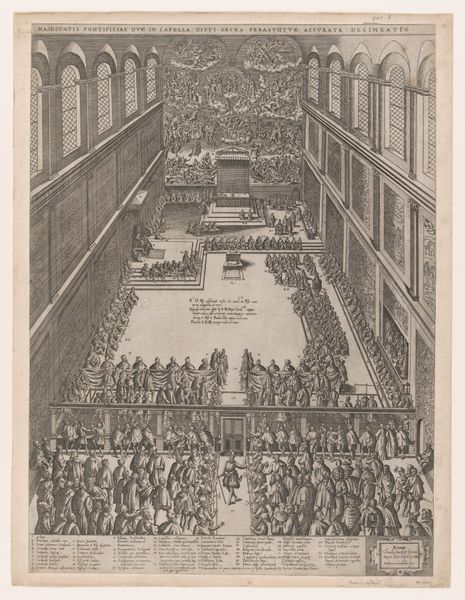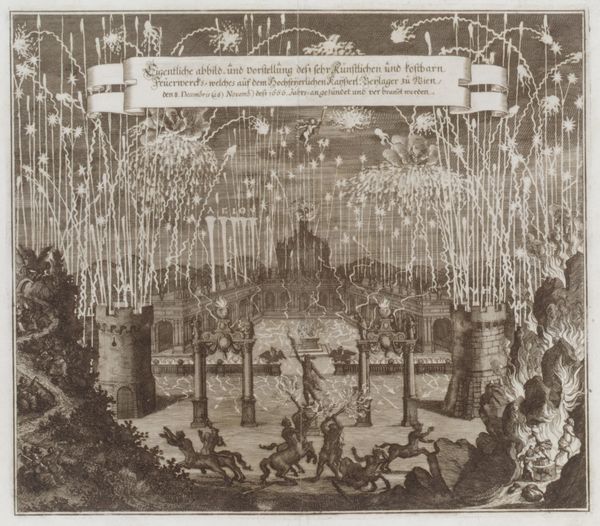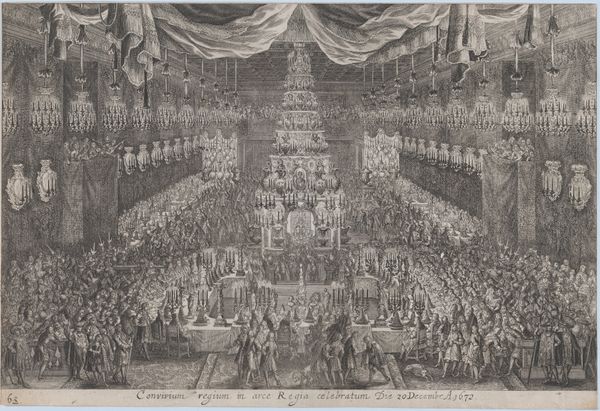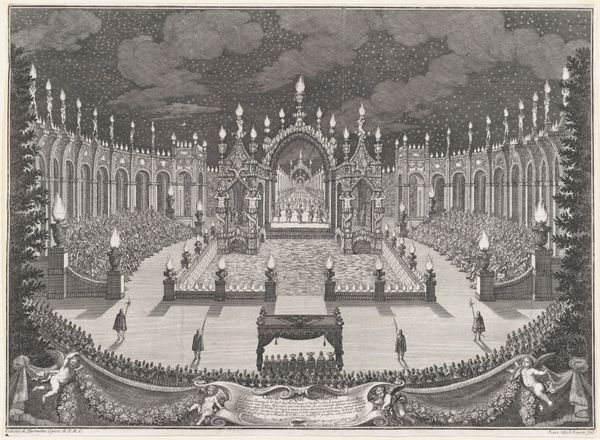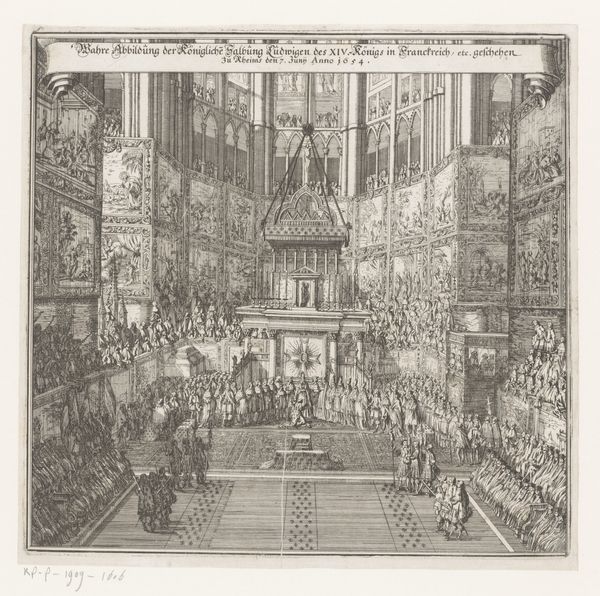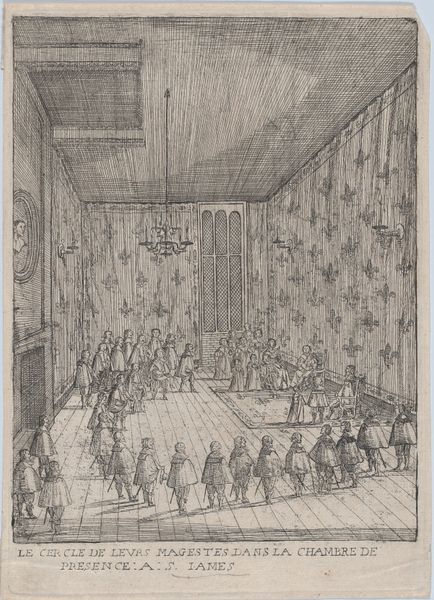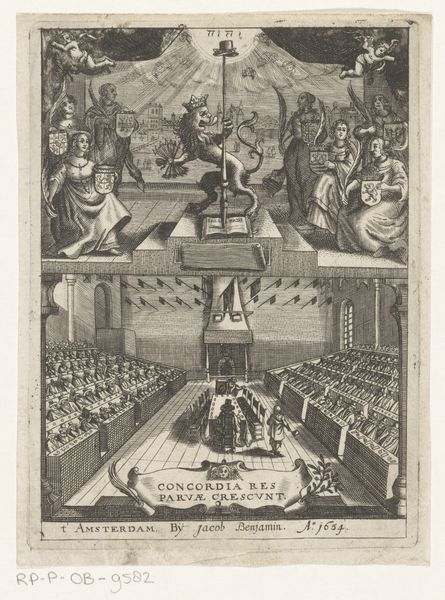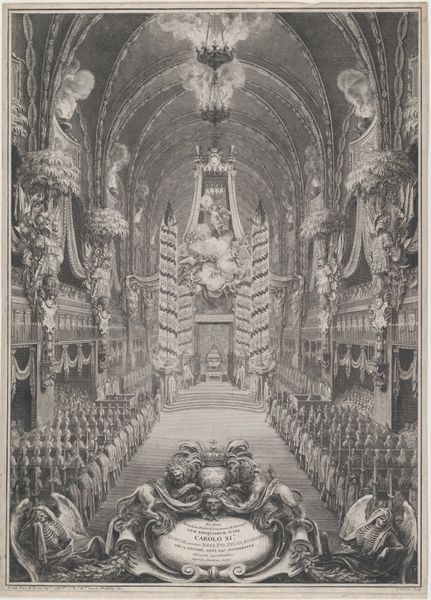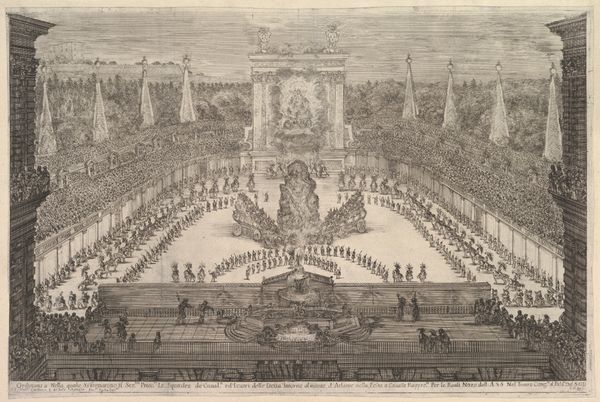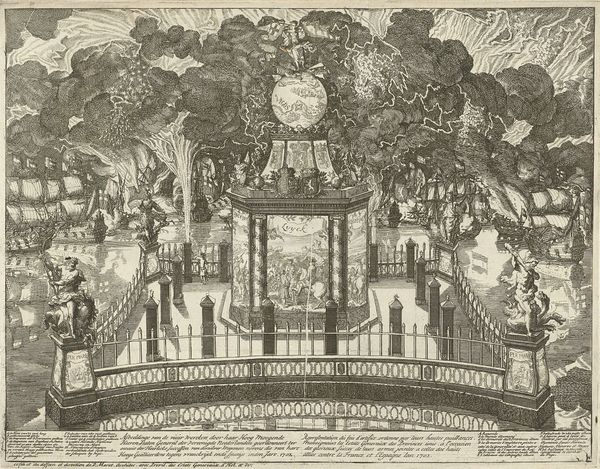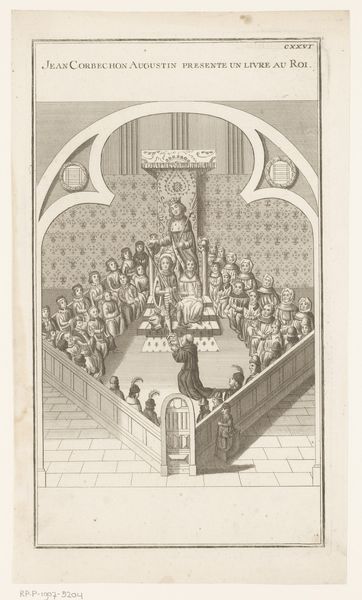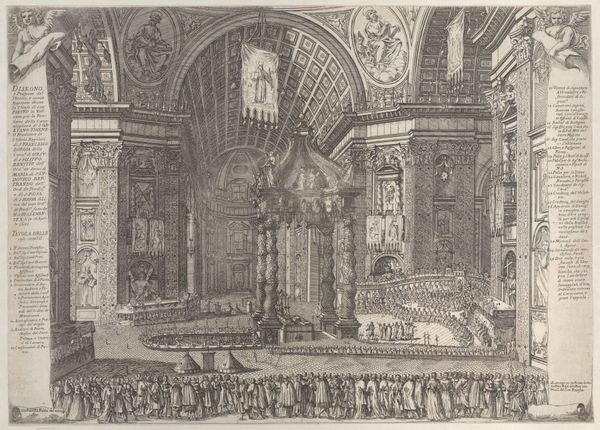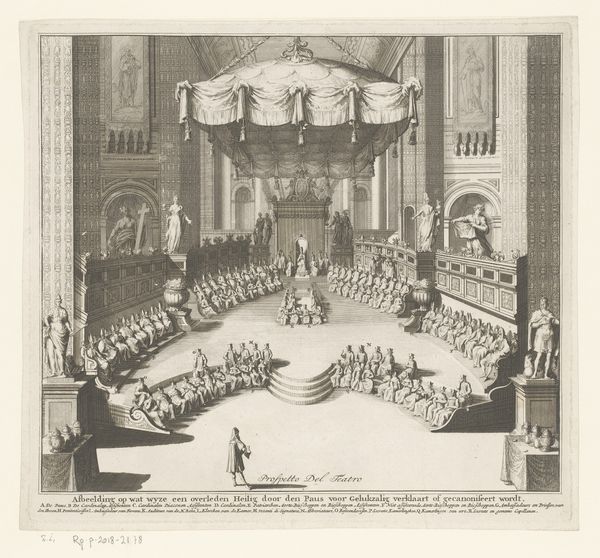
print, engraving
#
baroque
#
pen drawing
# print
#
figuration
#
line
#
cityscape
#
history-painting
#
engraving
Copyright: National Gallery of Art: CC0 1.0
Curator: What a dramatic space—it almost feels endless. What's your initial feeling here? Editor: Claustrophobia. Despite the architectural grandeur, there’s this…crushing weight of faces. I feel like I'm going to be swallowed by the crowd. Curator: Well, this is "The States General of France" by Jan Ziarnko, created in 1614. What we're seeing is an engraving that captures a pivotal moment of political assembly in France during the Baroque period. Think of it as a visual record imbued with symbolism about power, order, and representation. Editor: Representation… that's a generous word, looking at those masses of people! There's something unsettling about their uniformity, like they're faceless blocks. And those floating figures above—angels? What’s their deal? Curator: Yes, figures holding what seems to be a sword and an olive branch. It plays into the visualization of a heavenly blessing on earthly affairs, particularly the French monarchy. The crown and shield right above suggests divine right and legitimacy. This era was all about visualizing hierarchies, and Ziarnko employs this vertical composition quite deliberately. Editor: Hmm…a divine blessing seems heavy-handed considering all the social turmoil brewing back then. The perspective feels so…constructed. It's not showing the real messiness of politics, is it? The etching feels sterile, even calculated. Curator: Perhaps. But that's the point! Through this structured style of line and architectural space, the artwork isn't just showing you a gathering. It communicates an ideal—of a unified, divinely ordained France. But the success of the symbolism, as you point out, is perhaps arguable with the advantage of historical hindsight. Editor: So it's propaganda masquerading as historical record? Makes me think about the stories we tell ourselves—and the ones left out of the picture. You see divine order; I see political manipulation. Curator: And that tension between order and chaos, the ideal versus the real, is what makes the image resonate. It becomes a snapshot of a moment where those fault lines were already forming. Editor: I suppose you're right. It's not just a depiction, but an interpretation…a statement in visual form. That changes things, makes it less about the crowd and more about the idea behind the crowd. Curator: Exactly. A perfect example of cultural memory, continuously molded and reshaped through symbols.
Comments
No comments
Be the first to comment and join the conversation on the ultimate creative platform.
